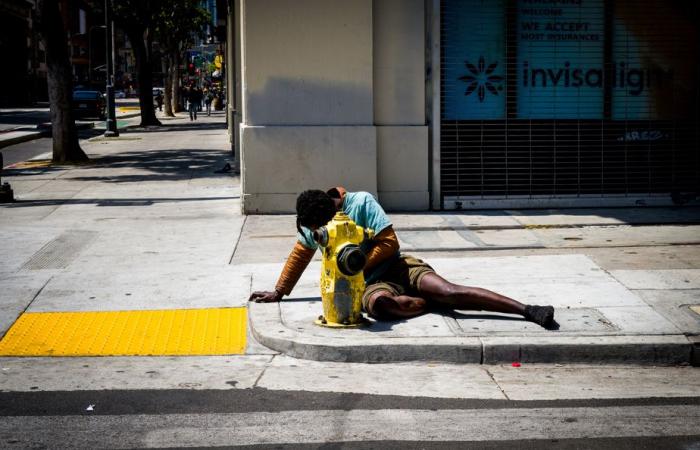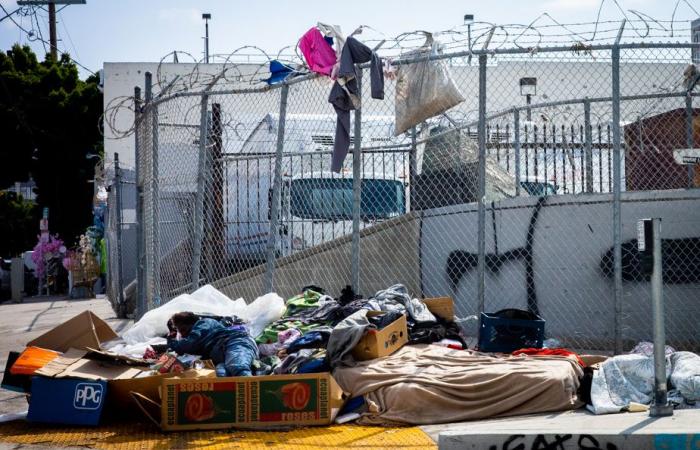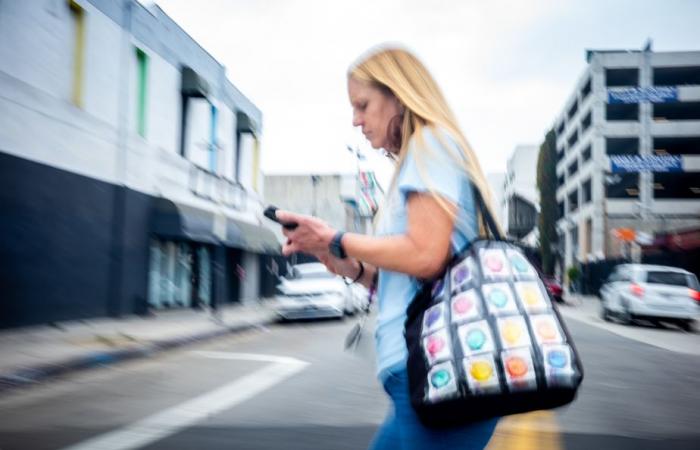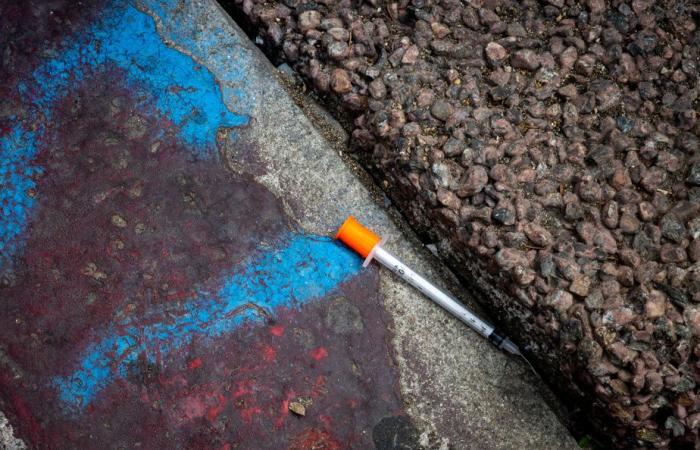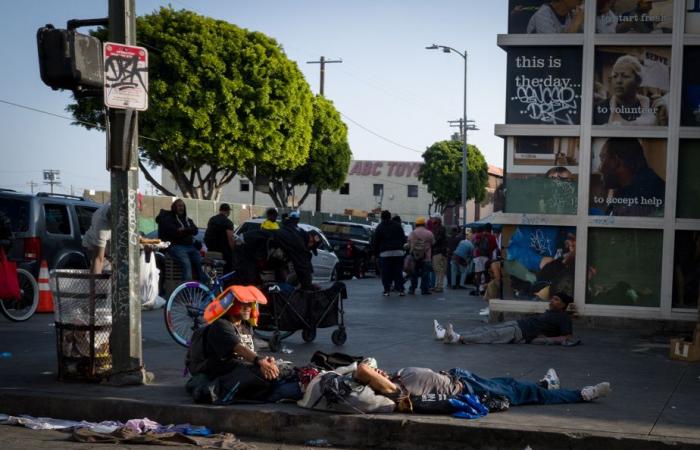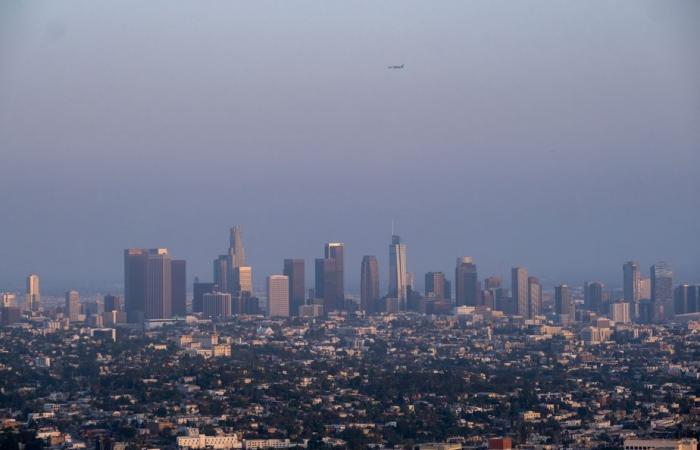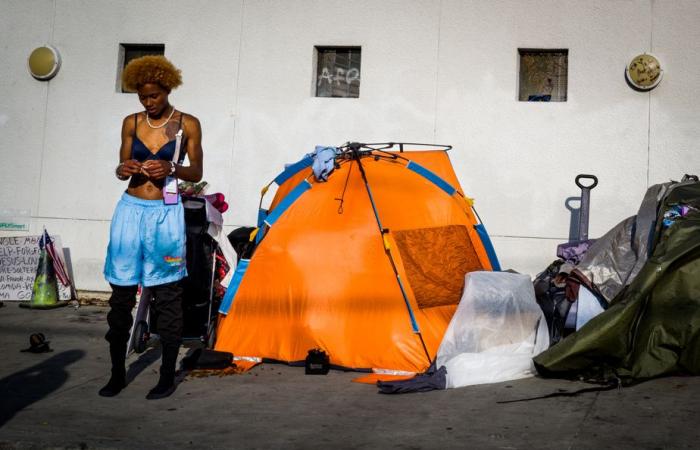(Los Angeles, Skid Row) In the poorest neighborhood of Los Angeles, it is impossible to use the sidewalks. Everywhere, they are cluttered with tents and other makeshift shelters where 4,400 homeless people live, a few kilometers from the glamour of Hollywood and the palaces of Beverly Hills.
Posted at 5:00 a.m.
We are at the epicenter of America’s homelessness crisis. Street after street, over more than a square kilometer, the camps follow one another. As if all the sidewalks of Old Montreal were covered with tents.
PHOTO DOMINICK GRAVEL, THE PRESS
Substance abuse and mental health problems are endemic among the homeless population.
Those who survive in these conditions seem to evolve in a parallel universe. Crack, fentanyl, methamphetamine and xylazine take their toll, as do mental health issues.
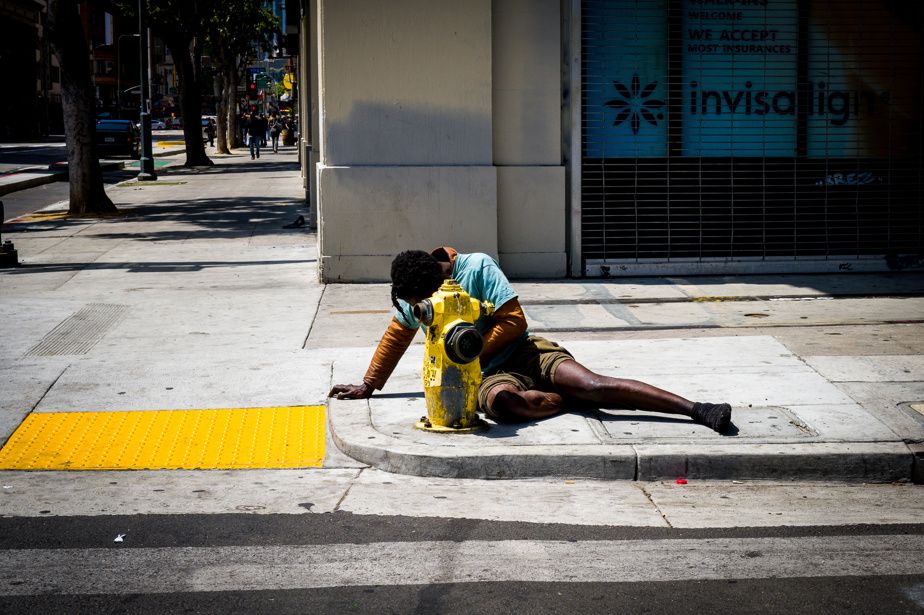
PHOTO DOMINICK GRAVEL, THE PRESS
Distress is omnipresent in the neighborhood.
Some walk with their eyes staring into space like zombies. Others dance to music that only they hear, laughing and moving their limbs in all directions like disjointed puppets.
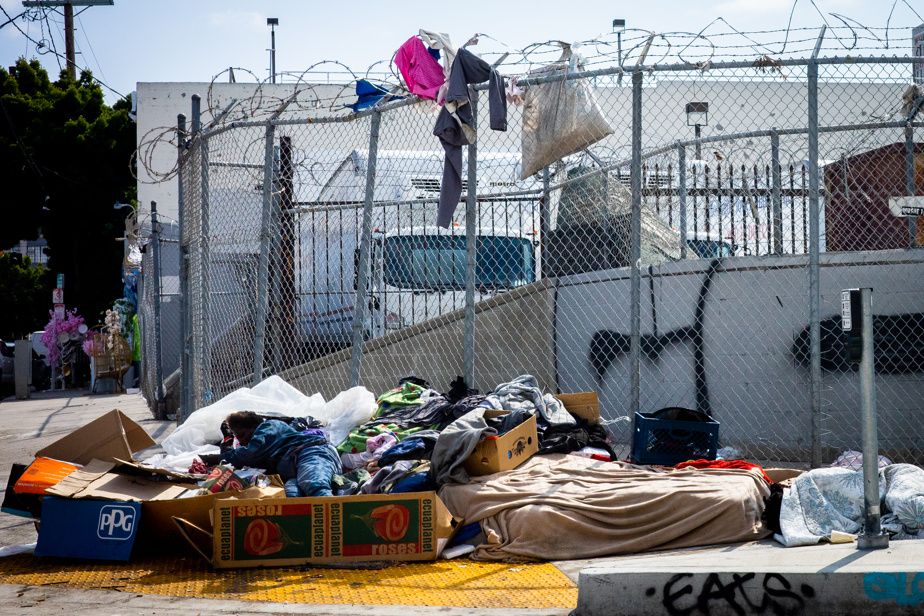
PHOTO DOMINICK GRAVEL, THE PRESS
The camps extend over more than a square kilometer.
Between the piles of heterogeneous objects and the ashes of the campfires that are lit there in the evening, surrounded by more or less threatening dogs, some greet us with a smug smile, while others insult us angrily.
No one hides to smoke their crack, even in the presence of the police, even when there are children.
Dead in the street
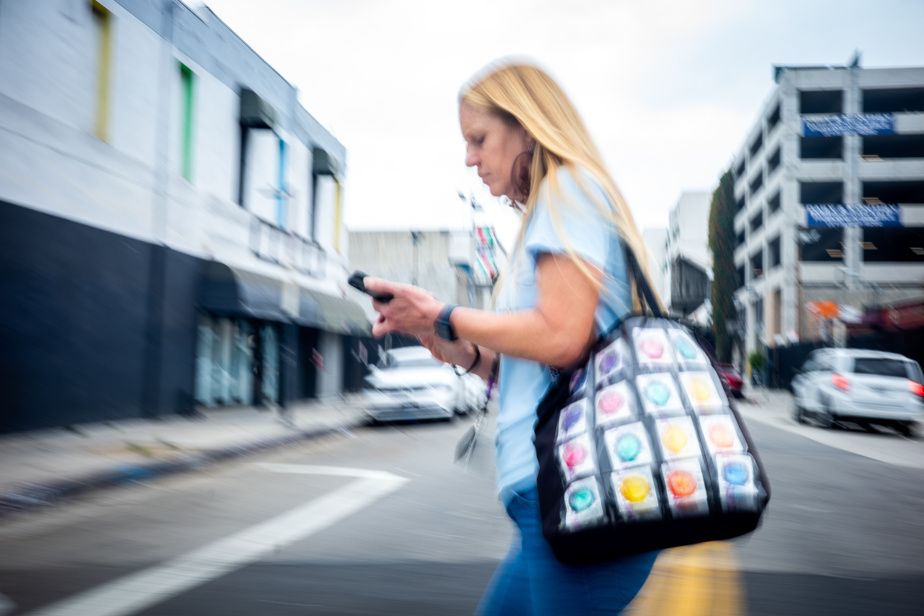
PHOTO DOMINICK GRAVEL, THE PRESS
A caseworker for Los Angeles County Health Services, Sieglinde von Deffner has worked on Skid Row for 20 years.
Sieglinde von Deffner walks quickly, while avoiding puddles of urine, excrement, syringes and other trash on the ground, impassive despite the nauseating odor that hits the throat. Impossible for this dynamic blonde, who has worked in the neighborhood for 20 years for the Los Angeles County Health Department, to walk more than one street corner without being stopped by someone who wants help, a housing or another service.

PHOTO DOMINICK GRAVEL, THE PRESS
There are many syringes thrown into the street.
Here, a man says he was kicked out of a shelter because he broke the rules. Further on, another complains about conditions that are too strict in a hotel purchased by the City to house homeless people.

PHOTO DOMINICK GRAVEL, THE PRESS
Homeless people sleep on the sidewalk.
Are these two men lying on the sidewalk asleep, or in distress or downright dead? The worker calls out to them to check if they are breathing. Reassured to see them moving, she continues on her way.
Every day, six homeless people die, mostly from overdoses, in Los Angeles County.
Sieglinde von Deffner, Los Angeles County Health Services Advocate
At the bend of a building, we come across a municipal team dismantling the camps on a section of street. In white overalls and orange or yellow bibs, sometimes masked and gloved, protected by police officers, City employees throw everything that remained on the sidewalk into a dump truck, before cleaning the area with a jet of water. under pressure.
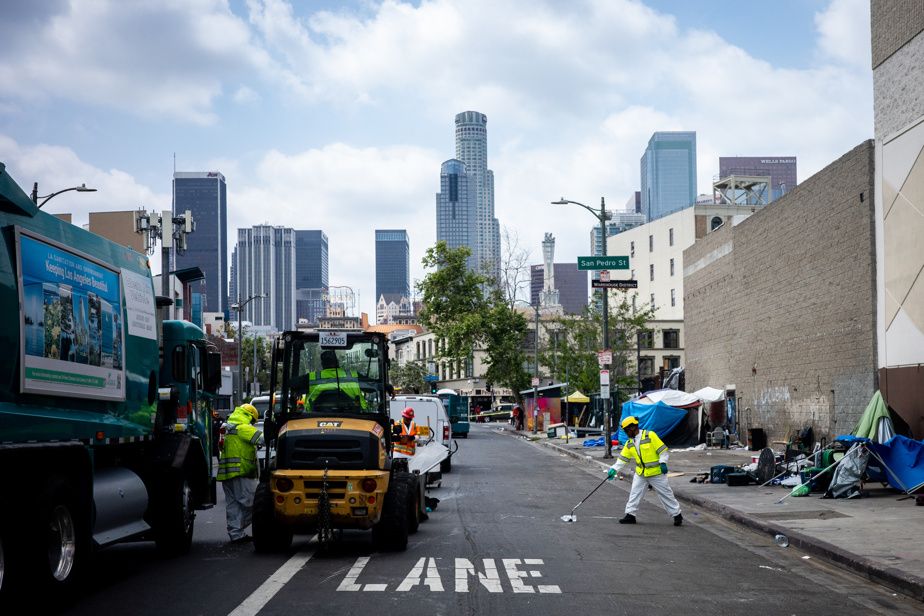
PHOTO DOMINICK GRAVEL, THE PRESS
City workers dismantle an encampment on a street in Skid Row.
Dismantling days are very difficult for people, very stressful. All they have to do is take a shower and when they come back, poof! they lost all their possessions.
Sieglinde von Deffner, Los Angeles County Health Services Advocate
The City of Los Angeles regularly clears encampments, even though those living there have nowhere to go: homeless shelters are full. In principle, notices are distributed at the scene 72 hours before the operation.
Not far away, two toddlers play near a tent. Families who find themselves on the street get places in a shelter as a priority, but the establishment that welcomes them is under renovation, which prevents them from staying there during the day, explains Sieglinde von Deffner.
Emergency state

PHOTO DOMINICK GRAVEL, THE PRESS
Downtown Los Angeles as seen from the Griffith Observatory
Los Angeles declared a state of emergency over homelessness in December 2022, amid the explosion of encampments. According to a count conducted in January 2023, 75,000 people live outdoors in Los Angeles County, which includes 37 municipalities and 9.7 million residents.
With funds from a special sales tax since 2017 intended to combat homelessness, the City and County have purchased and rented hotels and motels to house the homeless, and released millions to build social housing. , created tiny house villages, hired employees to improve the follow-up of files, in particular.

PHOTO DOMINICK GRAVEL, THE PRESS
Despite the state of emergency and the millions released to fight homelessness, encampments continue to multiply on Skid Row.
They pride themselves on having found permanent housing for 108,969 people, temporary places for 148,740 people and having prevented 34,265 from falling into homelessness since that time.
But on the ground, observers say they still see so many camps, and the shelters continue to overflow.
Los Angeles County is finding housing for more people, at a faster rate than ever before. But we still have work to do to keep pace with the number of people who become homeless every day.
Cheri Todoroff, executive director of the Los Angeles County Homeless Initiative

PHOTO DOMINICK GRAVEL, THE PRESS
Wade Herder, 57 years old
“I would love to have housing, or even a place in a shelter, but it takes forever,” laments Wade Herder, 57, who has been sleeping on park benches or on the ground for ten years.
The itinerant man, met on the grounds of a church which hosted mobile showers that day, in Pasadena, an affluent suburb of LA, was robbed several times. But what does he find hardest in the life he leads? “Find a place to pee!” », he replies.
Some milestones in the fight against homelessness in Los Angeles
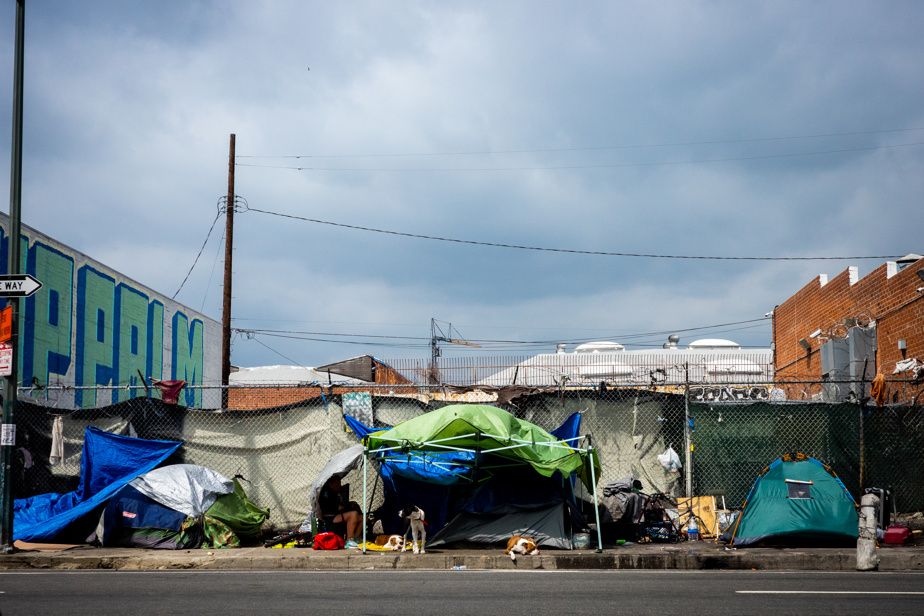
PHOTO DOMINICK GRAVEL, THE PRESS
The poorest neighborhood in Los Angeles, Skid Row has 4,400 homeless people.
- July 2017 – Implementation of Measure H, a 0.25% sales tax to fund homeless assistance, which brought in $527 million in 2022-2023. The measure had been accepted by the people of Los Angeles County the previous March by referendum.
- July to December 2020 – First purchases of 10 motels, with 850 rooms, to house the homeless, thanks to the Homekey program, for 175 million. Two subsequent phases made it possible to purchase 21 other establishments, for a total of 2,100 rooms.
- April 2021 – Federal Court requires City and County to find temporary or permanent housing for all homeless people on Skid Row within six months. The judgment will be overturned on appeal in September 2021.
- July 2021 – Adoption by the municipal council of a by-law prohibiting encampments near schools, daycares and parks, which opponents denounce as a way of criminalizing homelessness.
- April 2022 – Agreement between Los Angeles and those who sued it, providing for the creation of 15,000 new units to accommodate 60% of the homeless population over the next five years.
- December 2022 – Declaration of a state of emergency and launch of the Inside Safe program, the first actions of the new mayor, Karen Bass, to accelerate the construction of housing.
- April 2024 – The U.S. Supreme Court hears a case involving an Oregon city whose bylaw banning encampments is being challenged. An imminent decision that will affect all American cities.



